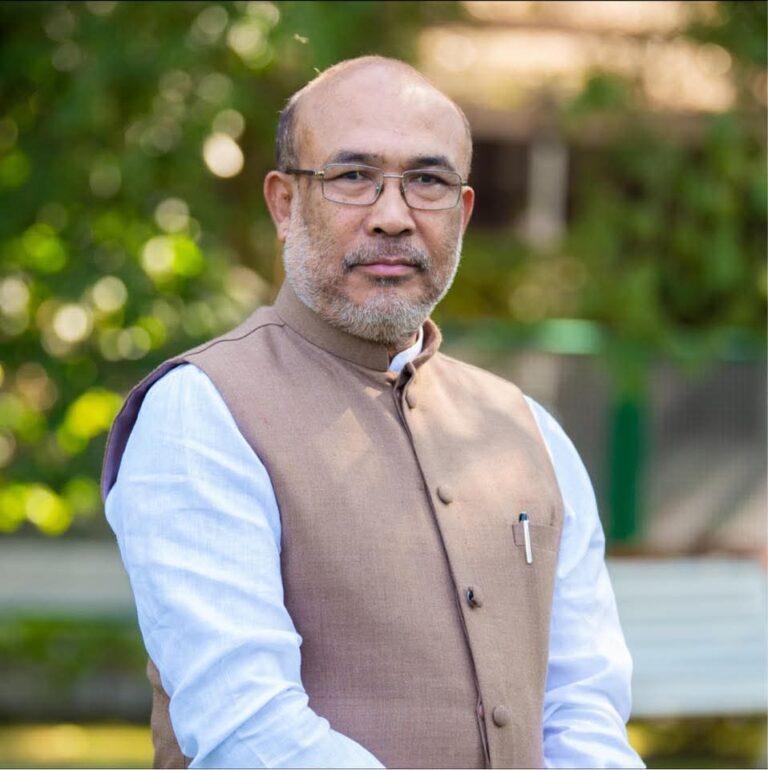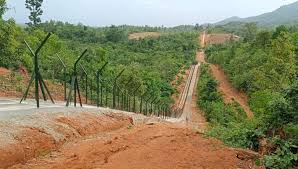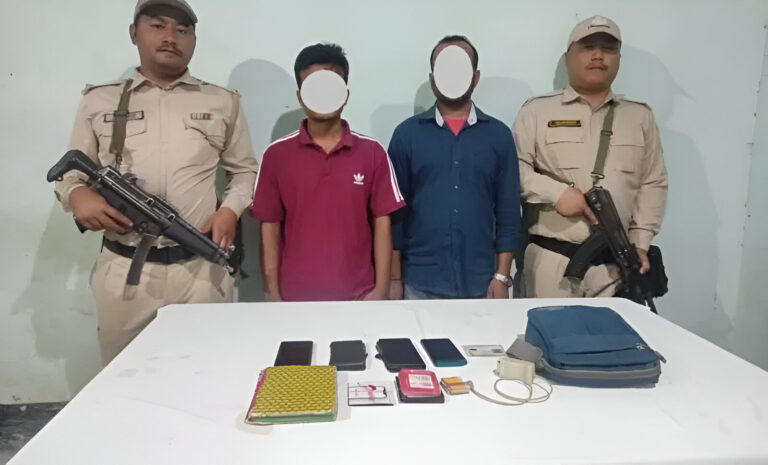Manipur Duo Arrested in Churachandpur with Huge Cache of Drugs and Cash
Summary of the News
On January 16, 2025, a major breakthrough in combating drug trafficking was achieved in Churachandpur, Manipur. Two individuals, Mrs. Chingsen (36) and Mr. L. Pausuanlal Simte (38), were apprehended at Mata village with a massive haul of narcotics and cash. The seizure included 208 soap cases of brown sugar, 1,73,000 WY/Yaba tablets, and ₹3,37,500 in cash. The operation highlights the ongoing challenges and efforts to curb the drug menace in the region.
Manipur’s Fight Against Drug Trafficking: A Deep Dive
The Context of Drug Trafficking in Manipur
Manipur, a picturesque state in northeast India, is often referred to as the “Gateway to the Golden Triangle.” This infamous moniker stems from its proximity to Myanmar, a country heavily involved in the production and trade of narcotics. While Manipur boasts stunning landscapes and vibrant cultures, its strategic location makes it a hotbed for drug trafficking.
The January 16 Operation: A Significant Seizure
The recent arrest in Mata village is a testament to the vigilance of Manipur’s law enforcement. The duo’s vehicle, which concealed the narcotics and cash, was intercepted thanks to actionable intelligence. Here’s what was uncovered:
- Brown Sugar (208 soap cases): A highly addictive heroin derivative, often trafficked for substantial profit.
- WY/Yaba Tablets (1,73,000 units): Known for their stimulant effects, these tablets pose a significant threat to public health and safety.
- Cash Seized: ₹3,37,500, suspected to be proceeds from drug deals or intended for further narcotic procurement.
How Big is the Problem?
Drug trafficking in Manipur isn’t a standalone issue—it’s part of a larger, more complex network. Traffickers often use the state as a transit hub, moving narcotics from Myanmar to other parts of India and beyond. The availability of these drugs has led to a worrying rise in local addiction rates, further straining the state’s resources.
The Implications of the Arrest
While the seizure is a win for law enforcement, it also reveals the organized and large-scale nature of drug operations in the region. The arrest raises several questions: Who is funding these activities? How are such large quantities being transported across borders? And most importantly, what can be done to stop it?
Understanding the Seized Substances
Brown Sugar
This heroin derivative is a dangerous opioid that can cause addiction after minimal use. It is cheaper than pure heroin, making it more accessible to low-income users. Its trafficking poses both a public health crisis and an economic burden on communities.
WY/Yaba Tablets
These are popular synthetic drugs, combining methamphetamine and caffeine. Often called “party drugs,” their usage leads to severe mental and physical health issues, including psychosis, heart problems, and aggressive behavior.
Challenges in Tackling Drug Trafficking
- Porous Borders: The 398 km-long border between Manipur and Myanmar is difficult to monitor, making it easy for traffickers to move contraband.
- Advanced Smuggling Techniques: Traffickers use innovative methods, from vehicle modifications to bribing officials, to evade capture.
- Resource Limitations: Law enforcement in the region often struggles with inadequate manpower and equipment.
- Local Addiction Epidemic: The availability of narcotics within the state has led to a spike in addiction, complicating efforts to eradicate the problem.
Government and Community Initiatives
The government and civil society have taken several steps to address the growing menace:
- Increased Surveillance: Regular patrols and checkpoints are being set up, especially in border towns like Moreh.
- Awareness Campaigns: Educational programs in schools and communities aim to highlight the dangers of drug use.
- Rehabilitation Centers: Non-governmental organizations and state-run facilities provide support to individuals recovering from addiction.
- International Collaboration: Engaging with Myanmar and other neighboring countries to dismantle cross-border networks.
What Needs to Change?
- Stronger Border Security: Deploying advanced technology, such as drones and thermal imaging, to monitor border areas.
- Harsher Penalties: Implementing stringent laws with mandatory minimum sentences to deter traffickers.
- Focus on Rehabilitation: Increasing investment in rehabilitation centers to support affected individuals and reduce demand for drugs.
- Community Policing: Encouraging locals to report suspicious activities without fear of reprisal.
Conclusion
The arrest of Mrs. Chingsen and Mr. L. Pausuanlal Simte is a step in the right direction, but it’s only the tip of the iceberg. Manipur’s battle against drug trafficking requires a multi-pronged approach that includes stringent law enforcement, international cooperation, and community involvement. Only by addressing both supply and demand can the state hope to overcome this persistent menace.
FAQs
- What are WY/Yaba tablets, and why are they dangerous? WY/Yaba tablets are synthetic drugs containing methamphetamine and caffeine. They are highly addictive and can lead to severe health issues, including heart problems and psychosis.
- Why is Manipur a hotspot for drug trafficking? Manipur’s geographical location near Myanmar, part of the Golden Triangle, makes it a transit hub for narcotics moving into India.
- What steps are being taken to combat drug trafficking in Manipur? The government has intensified surveillance, set up border checkpoints, launched awareness campaigns, and collaborated internationally to curb trafficking.
- How does drug trafficking affect local communities in Manipur? It leads to increased addiction rates, crime, and economic strain on families, while also impacting public health and safety.
- What can individuals do to help combat drug trafficking? People can report suspicious activities, participate in community awareness programs, and support rehabilitation initiatives for those struggling with addiction.


